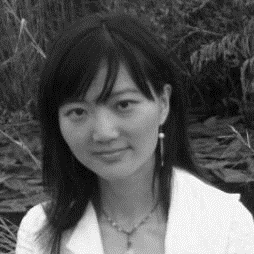Interview with Chi Shu, Ironside Senior Advanced Analytics Consultant
How Data Scientists Reveal the Right Actions
To help you understand Ironside’s philosophy on advanced analytics, data science, and predictive/prescriptive technologies, we thought it would be helpful to share insights directly from our data scientists.
 This week I spent some time with Chi Shu, a 5-year veteran in the data science and advanced analytics space with experience across both the public and private sectors. Prior to joining Ironside, Chi worked as a marketing analyst evaluating performance through segmentation and direct marketing models and as a government analyst using business analytics platforms to make critical metrics available to key stakeholders. Chi is one of our brightest programming minds with extensive knowledge of systems such as MATLAB, Python, R, SAS, and SPSS. Her top priority in any engagement is to consistently deliver personalized, relevant results that unlock an organization’s true potential.
This week I spent some time with Chi Shu, a 5-year veteran in the data science and advanced analytics space with experience across both the public and private sectors. Prior to joining Ironside, Chi worked as a marketing analyst evaluating performance through segmentation and direct marketing models and as a government analyst using business analytics platforms to make critical metrics available to key stakeholders. Chi is one of our brightest programming minds with extensive knowledge of systems such as MATLAB, Python, R, SAS, and SPSS. Her top priority in any engagement is to consistently deliver personalized, relevant results that unlock an organization’s true potential.
Keen Hahn: Thanks for talking with me today, Chi. To begin, can you tell me what it was that sparked your interest in advanced analytics and data science and what you think the most important thing other interested people should know about the field?
Chi Shu: I started out just generally interested in finding out what factors drive what kind of results and went from there. I wanted to explore the cause and effect of different interactions and this career path seemed the ideal way to do that. For others considering this path, I think they should know it’s probably more multidisciplinary and cross-functional than they think. Constantly learning new technologies and tracking business development is a must. These skills will make you able to address the many scenarios you will encounter.
KH: That focus on cross-functionality and agility must result in lots of potential analytics projects for data scientists to get involved in. What do you think a dedicated data scientist can add to a business’s analytics practice overall?
CS: I’d say the main benefit is making strategic and executable decisions based on scientific proof. The data scientist can help businesses know with certainty if they are taking the right actions or not.
KH: Have you had a favorite project you’ve worked on recently that you think embodies that value add, and what specific impacts did it have?
CS: I recently built a predictive policing model for the Manchester, New Hampshire Police Department that helps deploy officers in the best possible locations to deter crimes. The model utilizes geospatial information to map the likelihood of crime based on a number of factors and shows when different areas of the city are hottest in a visual format so officers can know where to be at what times. This is going to make staff allocation and incident response much more efficient.
KH: That sounds like a pretty sophisticated application of predictive technology. You must run into some bumps in the road as you develop these projects. What is the biggest challenge you’ve had as a data scientist, and what advice do you have for anyone facing a similar challenge?
CS: We’re collecting more and more data as modeling strategies evolve. How do we swim through those large volumes and recommend the best technologies to handle them at the speed of modern business? In other words, to me the biggest challenge is bridging classical modeling problems with big data challenges. The only way is to keep learning new technologies. You don’t need to know all the details but the core knowledge should be ready at the back of your head.
KH: All that data and technology must be daunting to anyone not fully versed in data science, and it seems like there’s already a lot of fear around advanced analytics in the business world. How do you think we can conquer that fear?
CS: Take baby steps. Start by narrowing down your modeling goal to a very specific one. Once you know what the right piece to address first is, you should then walk through the whole data mining cycle including deployment. Understanding all the pieces of the process hands on and having a realistic goal will make the results you get much clearer and will help you see how to extend predictive projects into wider areas of the organization.
KH: Are any of the new analytics options hitting the market today making it easier for the average person to include those different cycle processes you mention and the predictive and prescriptive analytics resulting from them in their daily activities?
CS: More and more specialized software and packages are becoming available. Some of them can be used for general purposes while others are for specific industries. This means you can choose whether you want a more generalized tool, which may require more time to use, or a more industry-specific tool that might have more limited functionality. Also, a lot of these new tools are very visual and UI oriented, so you don’t have to be a good programmer to get results from them.
KH: So taking into account the widening variety of solutions people now have access to, what are the top three things that everyone should do right now to start adding advanced analytics into their environments?
CS: It all boils down to collecting data, establishing an infrastructure, and understanding how to align your business needs to advanced analytics activities. You need to know where you’re getting information from, have a strong data warehouse to transform that information, and align those data preparation steps to the analysis questions that matter most to your business so your models will reveal actionable answers.
KH: Those are some great concrete steps. So looking a bit ahead from now, what’s your prediction (pun intended) about what the future of advanced analytics will be, what key milestones do you see coming to pass, and how do you think future advanced analytics efforts will differ from those undertaken today?
CS: I think the market will consolidate itself and you won’t see the number of major players in terms of tools increase as much as they have been in the present. However, I also see there being a fast increase in supply and demand in the field in terms of services offered. With more established technologies and a larger array of service offerings, advanced analytics practices will ultimately penetrate further into people’s daily lives and become much less mysterious to non-data scientists and business users adjacent to the field.
If you’d like to hear more from the Ironside Data Science and Analytics team, check out our other interviews with Pam Askar and Win Fuller.





